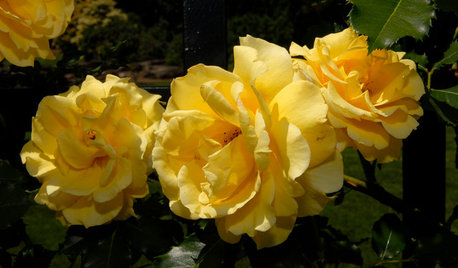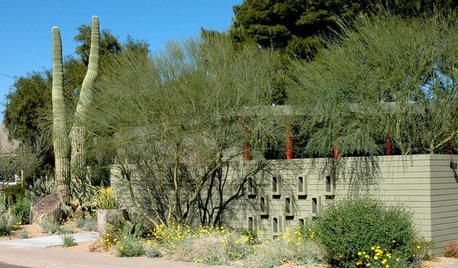Drip irrigation turns leaves yellow...
jtburton
10 years ago
Related Stories

GARDENING GUIDESHow to Install a Drip Irrigation System
Save time and water with a drip watering system in your vegetable garden — a little patience now will pay off later
Full Story
GARDENING GUIDESWhat's Wrong With My Plant? Leaves Often Hold the Clues
Learn how to identify common plant ailments by reading their leaves
Full Story
FALL GARDENING5 Ways to Put Fall Leaves to Work in Your Garden
Improve your soil and yard the organic way with a valuable garden booster that grows on trees
Full Story
LAUNDRY ROOMSRoom of the Day: The Laundry Room No One Wants to Leave
The Hardworking Home: Ocean views, vaulted ceilings and extensive counter and storage space make this hub a joy to work in
Full Story
GARDENING GUIDES5 Favorite Yellow Roses for a Joyful Garden
Make 'cheery' the name of your garden game when you order your roses sunny side up
Full Story
GARDENING GUIDESHow to Fix Bare and Yellow Lawn Spots
Restore your turf’s good looks by reseeding unsightly patches
Full Story
EARTH DAYGrow a Beautiful Garden With Ecofriendly Greywater
Reducing home water waste means lower bills and a healthier planet. Here's how to set up a greywater home irrigation system that can help
Full Story
GREEN BUILDINGHow to Harvest Rainwater for Your Garden
Conserve a vital resource and save money by collecting stormwater for irrigation in a barrel or tank
Full Story
GARDENING GUIDESGreat Design Plant: Parkinsonia Florida
Blue palo verde's trunk and branches provide a beautiful backdrop to a spectacular spring show in the desert
Full Story
SAVING WATER6 Reasons Why You Should Save Your Rainwater Now
Collect and store during the rainy season so you’ll have water ready for irrigation when you need it
Full Story






bamboo_rabbit
jtburtonOriginal Author
Related Professionals
Accokeek Landscape Architects & Landscape Designers · Carson Landscape Architects & Landscape Designers · Erie Landscape Architects & Landscape Designers · Severn Landscape Architects & Landscape Designers · Arlington Landscape Contractors · Cerritos Landscape Contractors · Lake Saint Louis Landscape Contractors · Little Ferry Landscape Contractors · Norristown Landscape Contractors · Panama City Beach Landscape Contractors · Pueblo West Landscape Contractors · Shaker Heights Landscape Contractors · Thonotosassa Landscape Contractors · Woodland Landscape Contractors · Shafter Landscape Contractorsjean001a
Noogy
bamboo_rabbit
jean001a
MrClint
larry_gene